Revisionist Iran’s military capability and implications
Iran’s use, export of its drones, missiles, its desire to acquire nuclear capability is worrisome for West Plus

The fact that Iran’s’ Islamic Revolution Guards Corps (IRGC)-clergy combine is a revisionist dispensation keen to export its brand; is steeped in civilisational superiority; and maintains influence and deterrence through masterful use of proxies and occasional direct intervention in the region is unsettling, to say the least. Iran’s use and export of its drones and missiles and its desire to acquire nuclear capability is worrisome for the West Plus for quite some time. Iran’s own overreach as seen in the recent missile strike in Pakistan is not helpful either. Last week we discussed the likely motivation for Iran’s posture, with particular focus on Pakistan. This piece would piece together Tehran’s military system…command, control, strategy, and military capability per se.
Revolutionary Iran remains defiant, proud and extremely nationalistic. Historically, Iran has considered Central and South Asia, especially the Subcontinent, and parts of Arab Peninsula as its sphere of influence. The perceptual battle between the “uncouth” Arabia and the “sophisticated” ajam, faaris or Paaris (Persia) continues to this day. Anatolian Peninsula (Turkey), Arabian Peninsula (Saudi Arabia) and Iranian Plateau (Iran) are three major geographic regions that converge on Syria-Iraq territory, the “Fertile Crescent” that has historically remained contested space. Therein all three — Turkey, Saudi Arabia and Iran — operate through regional allies: Ankara vying for ‘Turkish Middle East’; Saudis lacking geopolitical tools to dominate the entire region; leaving Iran, the only power with clearly articulated strategic vision and ambition, in the run.
In history, Iranian state has contested for a direct land access to Mediterranean Sea. The IRGC-clergy combine under the slain Gen Qasem Suleimani strategised this in recent times, propping Hezbollah in Lebanon, Houthis and Hamas in Arabia, and influence Syria and Iraq in what is called a “Shia Crescent”. Iran’s Grand Strategy thus seems domination of its area of influence including Mediterranean militarily and culturally and using religion. However, projecting power from Mediterranean springboard means neutralising Israel, and working against Saudi, GCC, Jordanian, Turkish and Russian interests not to mention the West Plus. And that remains tough asking.
So, Tehran finds deployment of hard and soft power (Shia Islam and militant proxies) as the main pillar of its Grand Strategy since Revolution (1979), being cost effective and efficient. Drawing both from the Soviet and US systems, and given Tehran’s resource limitations, experience of the Iran- Iraq war (1980-88) and unanticipated situational demands, Iranian military doctrine, adopted in 1992, avoids direct or extended conflict with superior conventional powers. The protracted ‘guiding influence’ of Supreme Leader Ayatollah Ali Khamenei since 1989 provides the needed consistency.
The doctrine relies on atypical combination of conventional forces …a Western-style Islamic Republic of Iran Army (Artesh-e-Jomhouri-ye-Eslami-ye-Iran, or simply Artesh) and the ideologically reliable IRGC (Sepah-e-Pasdaran-e-Enghelab-e-Eslami or Pasdaran) — Pasdaran being the mainstay of its military system that controls the cherished missiles. As guardian of the Revolution and clear favourites over Artesh for their loyalty to the clerics, Pasdaran command Ground, Naval and Aerospace Forces, the Quds Force and Basij Militia alongside cyber, intelligence, counterintelligence and security forces, and the commercial conglomerate called Khatam-al-Anbiya.
Pasdaran exercise influence over Hezbollah in Lebanon; 313 Force, Liwa-al-Baqir and Quwat-al-Ridha in Syria; Hamas in Palestine; Badr organization, Asaib-Ahlel-Haq, Harkat-Hizbullah-al-Nujaba and Kataib Hizbullah in Iraq; Ansarullah (Houthis) in Yemen; al-Ashtar in Bahrain; Liwa-al-Fatemiyoun in Afghanistan and segments of Liwa-al-Zainabiyoun in Pakistan, enhancing Tehran’s psychological warfare, propaganda, and perception management potential. It also operates a variety of armed UAVs like Kaman, Mohajir, Shahed Series and Hamaseh; in addition to Zulfiqar, Fateh Mobin, Dezful, Hoveizeh, Qiam and Shahab Series (1,2,3 variants) missiles etc. Missiles constitute Iran’s core capability, hitting targets up to 2500 km. This is besides its cyberweapons.
The recent airstrikes into Iraq, Syria and Pakistan, analysts feel, were showcasing this capability with enhanced range, precision, and stealth. Its Idlib, Syrian attack that targeted ISK terrorists comprised one of its longest-range and most advanced missiles, the Khyber-Shikan. Unveiled in 2022, Khyber-Shikan a solid-propellant precision-guided missile can hit up to 1,450 kilometers (including Israel). And its warhead can maneuver using small aerodynamic fins, enabling it to evade ‘some’ traditional air defence (AD) systems. Its combat-testing is seen as messaging to Israel, as well as sale pitch for these missiles.
Russia has purchased thousands from Iran’s fleet of drones (and is now negotiating ballistic missiles also) for use in Ukraine. The continuous flow of funds and R&D have improved Iran’s missile and drone range, lethality, and complexity. Pasdaran develop missiles in parallel to Iran’s Ministry of Defense. Houthis use most, if not all, Iranian weaponry. They seem to have copied and improved Iran’s Paveh missile’s range from 1,650-2,000 km.
Drone-missile combination in good numbers can overwhelm any AD capability, as repeatedly seen over Saudi Arabia, Red Sea and recently over Israel. Moreover, firing costly AD weapons at inexpensive drones also escalates the cost of conflict, as experienced in Ukraine.
Iran’s estimated over 3,000 ballistic missiles, its increasing stockpile of cruise missiles make it a self-proclaimed missile power. Its ballistic missile programme grew from aging Scud missiles (acquired from Libya and North Korea) during 1980s into today’s satellite-guided, GPS-navigable, infrared-seeking precision weapons, spanning short and medium ranges. Some can strike targets as close as 20 km.
As per International Institute for Strategic Studies (IISS), Tehran’s defence budget was 10th largest globally in 2022, with major chunk (41%) going to missile programmes, pivotal to its ‘aggressive’ defence doctrine. Iran has successfully positioned itself for the contactless future battlefield through its drone-missile-cyber capability. Its conventional arsenal of tanks and aircraft etc is, therefore, reportedly either aging or obsolete.
Iran’s recent bluster through training missiles at ‘frenemies’ is seen by diplomats and experts as a combination of venting anger, warning, deterrence, domestic chest-thumping and sales pitch to future customers. Iran’s Military Strategy of avoiding direct and extended conflict with superior powers — although suiting its strategic ambition, revolutionary goals and economic potential — has serious weaknesses. By employing asymmetric and unconventional capabilities, as cited, a sanctioned Iran risks over-extension and long-term sustenance. And this weakness generally forces Iran to back down in crises at the last moment.
Tehran’s force projection is also transient for sectarian colouring of its involvement and its intrusive nature. And these factors combine to lead Iran towards regional and international isolation, despite the righteousness of its cause(s)... like its stand against Israel’s genocidal war in Gaza.
Published in The Express Tribune, February 1st, 2024.
Like Opinion & Editorial on Facebook, follow @ETOpEd on Twitter to receive all updates on all our daily pieces.




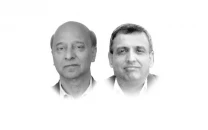

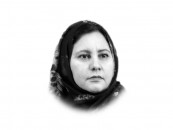

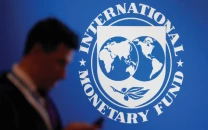
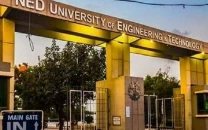

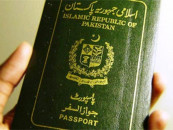

COMMENTS
Comments are moderated and generally will be posted if they are on-topic and not abusive.
For more information, please see our Comments FAQ